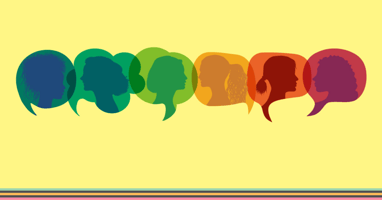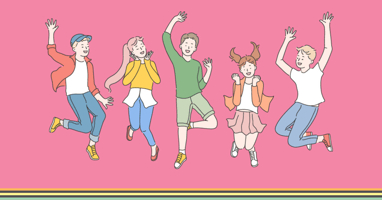It started with my son Arlo.
Let’s Ditch the DIS from Disability


Recently my colleague Alex and I spent a week in Las Vegas. We were excited to be having the opportunity to spend time in the city that never sleep.
While visiting Vegas was an eye opener for both Alex and I, we weren’t there to gamble or enjoy the night life. We were on a much more important mission.
A mission to help make online education more accessible so that help all students regardless of ability have a right to learn and thrive in whatever it is they choose to do in their lifetime.
We travelled to Vegas as this was the venue for this year’s Education 2.0 Conference and Alex and I were there to represent Australian innovation in accessible technology and to launch Meet Aandi in the US
It was an honour to represent Australian innovation and to have the opportunity to speak to educators and thought leaders providing insights into how Meet Aandi can open up a world of information for all abilities.
Below is just a small part of my speech that I gave on the first morning.
“I have a problem with the word, disability. It labels students and singles them out as being different. I think we need to delete the DIS and focus on a student’s own unique ‘ability’.
I say this as everyone of us in our lifetime will be challenged by a loss of ability. Be that permanent such as losing our eyesight, or a temporary disability such as an eye infection.
We are all unique, If I was to go around the room some of us will have mobility, hearing, learning, vision, or intellectual challenges, identify as neurodivergent, or have a medical impairment perhaps such as chronic fatigue syndrome or an auto immune condition. Your unique students are no different when it comes to their range of abilities.
There is so much that is good about this technology age we find ourselves in, it allows us to adapt information to meet the needs of the individual student, instead of the individual needing to change to meet the needs of the online lesson.
One simple way to do this is by incorporating video.
Video – which could be recorded lessons, part of online learning or even interactive online presentations –cater for students diverse learning styles, as it suits their visual, auditory, and kinaesthetic approaches to learning.
But only if the video has been made accessible. To make a video accessible it needs, captions, (what is said), audio description (what is shown) and a transcript of both that become lesson notes.
I want to share how this applies to a pilot project we are currently working on.
The Sydney Youth Orchestra received funding for online learning during COVID and produced a series of online video lessons and supporting material designed to teach students how to play an instrument.
This was great, but none of the video lessons were made accessible. In fact, none of their lessons in person or online were setup for blind students. If they had a blind student, they catered for them as a one-off specialised case.
They say the standard you walk past is the standard you accept; well, I couldn’t walk past this.
We are now remediating violin lessons for Gem, an 8-year-old music student, blind since birth. We are following her journey and capturing her feedback on how we can improve the online lessons so Gem can learn just like any other student.
This pilot relates to making music accessible however it applies to online learning in all areas. Because when we make our lessons accessible for all abilities, we remove the barriers to learning.
In closing, I want to leave you to consider that socially for change to happen we need to talk about our differences as unique abilities rather than focus on them being a disability. We need to speak up and we need to encourage our students to speak up about some of the learning challenges they are facing.
Technology makes accessibility easy but only if we are creating our content with accessibility in mind. Knowledge is power, but this is something we all need to work on together.”
Like my closing at the conference, I ask that you spend now just one minute considering if the work you do is truly accessibly to all abilities. And if it’s not, ask what could you do better?
Want to make a difference but not sure where to start. Give us a call at Meet Aandi, we would love to spend more than a minute chatting with you.
Belinda
Founder Meet Aandi



.png?height=200&name=Copy%20of%20Meet%20Aandi%20Blog%20Template%20(1).png)
